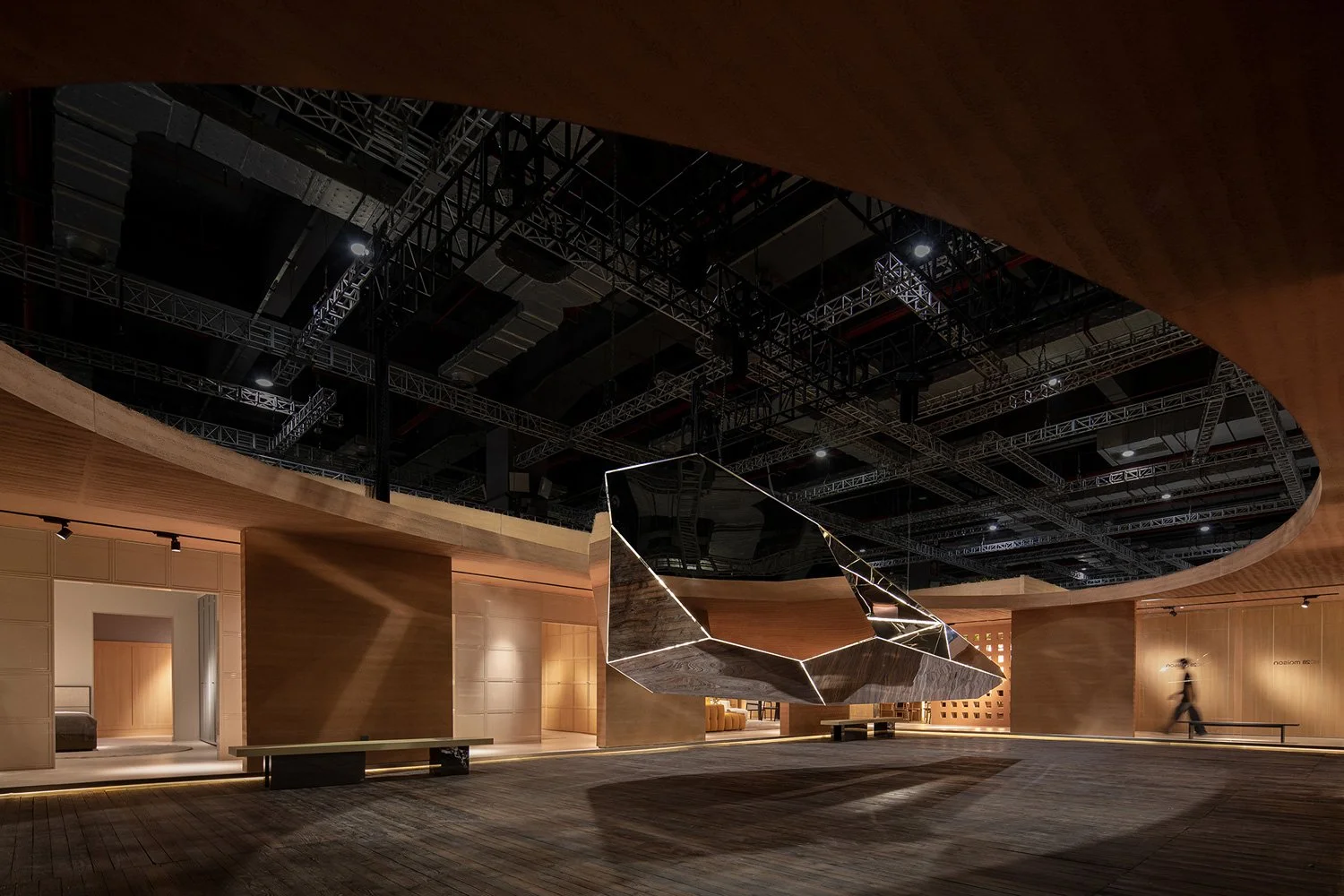THE MIRROR OF EMOTION || How International Designers Translate Chinese Aesthetics into Contemporary Living

Most conversations about cultural exchange happen in words, but this one unfolds in mirrors, materials, and shifting light.
This year, HC28 maison served up something different for the fifty-sixth edition of CIFF (China International Furniture Fair) in Shanghai. Their exhibition, titled “The Mirror of Emotion,” is conceived as a cultural crossroads where four global design voices, Ma Yansong, Yabu Pushelberg, Marcel Wanders, and Pearson Lloyd, interpret Asian aesthetics through their own creative languages. Rather than presenting a series of isolated objects, HC28 maison stages the experience as an urban neighbourhood, guiding visitors from a quiet “museum” of signature pieces into a sequence of lived-in scenes. Each space becomes a conversation about influence, translation, and shared sensibilities.
At the heart of the exhibition hangs Ma Yansong’s striking installation Moodcraft. Suspended like a crystalline vessel, the mirrored structure distorts, rearranges, and reframes the surrounding environment. Step inside and the reflections break into fragments that float and tilt, catching silhouettes in unfamiliar orientations. Ma describes it as a spacecraft that appears to land and vanish at the same time. In practice, the piece feels like an inquiry into perception itself. What we see often depends on vantage point, habit, and expectation. The installation turns these assumptions into a visual puzzle that suggests reality is never as static or complete as we believe.
Ma Yansong’s Moodcraft installation reframes the exhibition plaza with shifting reflections that challenge perception. © Hanmo Vision Yi Gao
Visitors move through a mirrored interior where familiar scenes appear fragmented and reassembled. © Lin Shu
From there, the narrative widens into a broader cultural dialogue. Yabu Pushelberg’s contribution draws from the forms and colours embedded in Chinese craftsmanship and architecture. Their interpretation is not literal. Instead, they translate cultural memory into contemporary silhouettes, creating furniture that feels rooted in tradition but entirely at home in a modern interior. Glenn Pushelberg speaks of form, colour, and structure as the connective tissue between cultures. Within the exhibition, this perspective reads as a gentle fusion of sensibilities that invites global audiences to encounter familiar ideas through a renewed lens.
Yabu Pushelberg’s living room vignette blends contemporary forms with subtle references to Chinese craftsmanship. © Hanmo Vision Yi Gao
A sculptural dining tableau brings warm tones and natural planting into dialogue with clean, modern silhouettes. © Hanmo Vision Yi Gao
Pearson Lloyd approaches the question of cultural interpretation through contrast and restraint. Their designs nod to the yin-yang philosophy, exploring how small shifts in angle and position can alter spatial experience. Influenced in part by Richard Serra’s monumental sculptures, their mirrored coffee table becomes a conceptual anchor. It does not offer a perfect reflection. Instead, it reveals fractured glimpses that remind viewers to avoid taking themselves too seriously. The work demonstrates how a simple surface can become an emotional device, prompting self-awareness without losing the clarity of functional design.
Curved seating compositions inspired by yin and yang encourage conversation and relaxed flow. © Hanmo Vision Yi Gao
Pearson Lloyd’s mirrored tables play with partial reflections to prompt moments of self-awareness. © Hanmo Vision Yi Gao
Marcel Wanders offers a counterpoint through expressive imagination. His sculptural lounger draws inspiration from the elegance of a peacock, refined through a contemporary palette and grounded in material experimentation. The result is a piece that sits comfortably between art and utility. It carries the theatricality of Wanders’ signature style, yet remains sensitive to the quiet sophistication that defines HC28 maison’s world.
Marcel Wanders’ peacock-inspired lounger introduces sculptural drama into a quiet, refined setting. © Guan Li
Together, the four designers present a compelling case for cultural translation as a design strategy. Their works reveal how Asian aesthetics can be interpreted, reframed, and celebrated from multiple vantage points. The exhibition positions HC28 maison not only as a furniture brand but as a mediator of global ideas. Each space proposes a future where design is shaped by cultural literacy, shared values, and the collective imagination of designers across continents.





